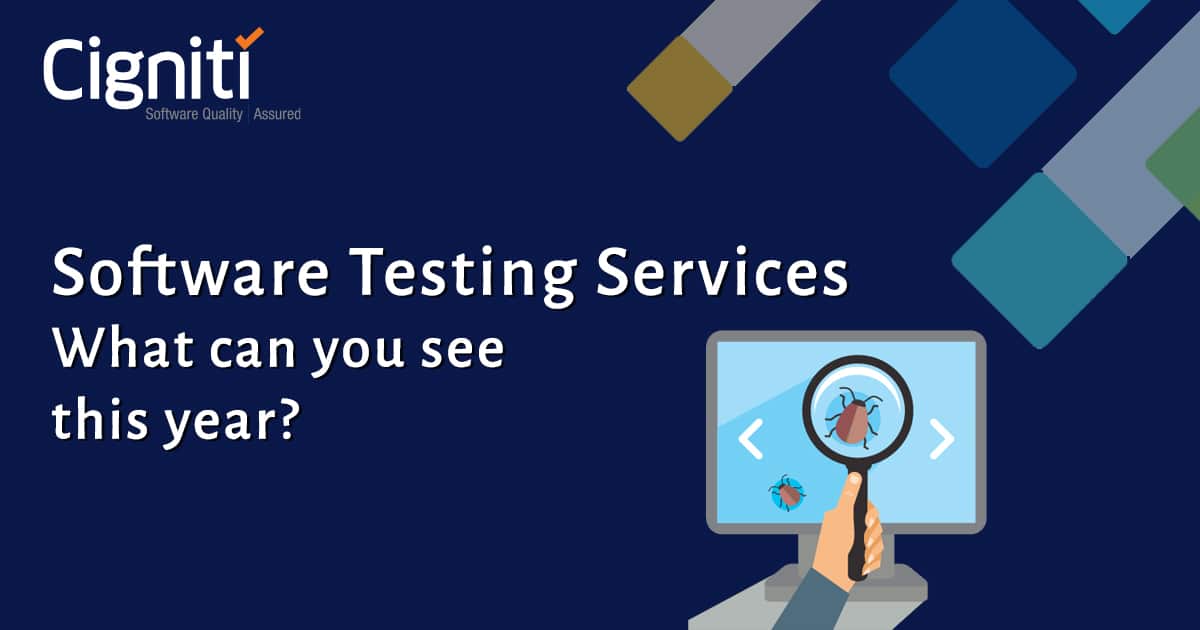The Capabilities and Importance of Accessibility Testing
In the growing digital landscape, it’s a significant challenge to meet and cope with customer expectations, changing trends, use of technology, and expand the user base for digital applications. Many applications today fail to realize their full potential because they do not consider the complete end-user requirements during the design and development phase.
It requires an exceptional effort to create and develop new technology accessible to all users. For example, let us think of releasing a web application to the market that should be accessible to everyone, including individuals with blindness, deafness, and other physical and cognitive challenges. It is here that the vital role of accessibility applications and testing comes into play.
What is Accessibility Testing?
It is a technique that validates and verifies digital content in the form of applications (web, mobile, desktop, etc.) available to all users, including those with disabilities like vision impairments, deafness, and other cognitive conditions.
This testing ensures accessibility to the entire application for all abled and disabled individuals and utilizes the features without conventional interactions like a mouse, keyboard, etc.
Accessibility Testing Guidelines:
Organizations can build web and other digital applications by adhering to WCAG (Web Content Accessibility Guidelines), ADA compliance, Section 508 compliance, and VPAT (Voluntary Product Accessibility Template) guidelines and standards.
World Wide Web Consortium (W3C) sets the following guidelines for Accessibility testing:
| Perceivable | An interface and information must be presentable for the end-user to perceive—for example – alt text in images. |
| Operable | Navigation must be accessible and operable throughout the user interface. For example – Keyboard navigation |
| Understandable | The user interface’s content must be readable using a meaningful statement instead of color-coded instructions. |
| Robust | The user interface’s content must be robust to be accessible by all users, for example – When a user accesses a URL on different viewports like desktops, mobiles, and tablets. |
Why is accessibility testing so important?
The below aspects bring out why Accessibility testing is so critical in the current era,
- Approximately 15% of the world’s population suffers from a disability, and ensuring accessibility to digital products and tools can increase the company’s market share.
- Improves overall SEO performance of application through enhanced usability and neat UI.
- Positive public relations- A great way of showing a clear commitment to CSR, it ensures the product and services are all-inclusive. Eventually builds customer trust, loyalty thus enhancing your brand’s image
- The accessible application helps organizations to avoid legal complications
Regulations
Further, with the proliferation of digital applications at a rapid pace, it is important to ensure accessibility to all users. This access should follow IT accessibility laws and policies, various initiatives from the public, federal agencies, individuals, and organizations that have been taken up to support technology brought in to achieve accessibility.
Section 508 of the Rehabilitation Act of 1973– To make electronic and information technology (EIT) accessible to people with disabilities. It applies to all federal agencies when they develop, procure, maintain, and use EIT.
Some of the other related laws are:
- Section 255 of the Communications Act
- Americans with Disabilities Act (ADA)
- Assistive Technology Act of 1998
- Help America Vote Act of 2002
- 21st Century Communications and Video Accessibility Act of 2010
Accessibility Testing and Services
Focus Areas- Requirements and Consideration
It is essential to analyze and develop accessibility applications with more straightforward visuals, clear-cut content, and effects while considering people with a wide range of impairments, such as:
- Visual: Full blindness and partial blindness, Colourblind, low vision and
- Physical: Problem with using keyboard and mouse
- Cognitive: Autism or any head injury
- Hearing: Auditory problems like deafness and hearing impairments, hyperacusis, etc.
- Deafness, paralysis, cerebral palsy etc
Above disabled individuals require special enablements in the software to perceive complete information in the application/web page. Application UI is expected to (web, offline, desktop) meet particular requirements that should solve the pain points of disabled individuals.
- Applications to support motor/physical disabled using special or focus keyboard, larger trackball mouse, etc.
- Text alternatives for individuals with visual impairments– there should be a keyword attribute that enables all images that contain relevant contents
- Closed captioning- helps convert the audio to visual form, sign language interpreters for the hearing impaired
Accessibility Challenges
- Organizations should conduct an extensive assessment to ensure testing captures complete accessibility requirements.
- Automation testing is inadequate to validate accessibility test conditions and complete conformance testing. This gap eventually necessitates manual testing with ample time, cost, resources, and expertise to cover the full range of testing scope.
- More extensive and complex websites often have dynamic content and frequently changing publishing patterns. Hence, validating all possible permutations with the page-level test is difficult.
- Information update from the third party: multiple entities/sources access most big websites’ content – 3rd parties directly provide information to the website. It is critically important to assess whether the 3rd party data update meets the accessibility standard and typically requires manual interoperability tests.
- It is challenging to think of the holistic view of accessibility needs while meeting regulatory and compliance standards.
- Identify the discrepancies, issues/defects in the earlier phase of development to avoid rework. Extensive testing is required in all the test cycles
Accessibility Testing- Assistive Tools
Organizations should perform Accessibility tests in all phases. However, it currently falls short of expectations. While testing the application, below are the basic usability features that the testing team expects to meet minimum accessibility requirements.
- Descriptive Link Text
- Avoid Pop-ups
- Simple sentences and language
- Easy navigations
- Use of CSS layouts instead of HTML
Below are the details of tools and technologies for accessibility testing. These tools facilitate organizations’ testing of their desktop, web, and mobile applications.
Auditing Tools
There are numerous tools available on the market. They look over the applications when enabled or installed, examine them thoroughly, and return the list of accessibility issues in the page or application component.
- Audit tools accept the application URL and return appropriate annotations highlighting the accessibility problems
- Examines the code of the respective applications and provides the result on accessibility errors based on WCAG and applicable guidelines and standards
- While addressing the accessibility defects and errors, these tools return the suggested fixes
Automation tools:
The automation tool runs on top of applications as it checks the web pages and returns information on accessibility errors. Additionally, it provides browser extensions. These tools can be installed and integrated with task runners and automation frameworks like Selenium and Cucumber.
Assistive Technology
Screen Readers have been one of the broadest assistive technologies that provide better usability for people accessing a web page or other applications.
A few assistive features to consider are:
- Alternative text in the image to describe the image
- Form fields are clearly labelled
- Use of simple and appropriate designs like tables for table data instead of layout
Conclusion
Cigniti has a dedicated expert team to perform accessibility testing leveraging the aforementioned tools and solutions. The testing team owns the testing across various stages, such as SIT, sanity/smoke, regression, UAT, and functional and performance testing.
Cigniti associates are skilled in business requirement analysis, documenting requirements with clarity, implementing and strategizing test plans, designing and executing test scenarios, and providing maintenance support, among other things.
Need help? Talk to our BFSI domain testing experts to understand the accessibility application business scope based on the recommended practices and Cigniti’s exclusive coverage specific to the client ROEs.





Leave a Reply